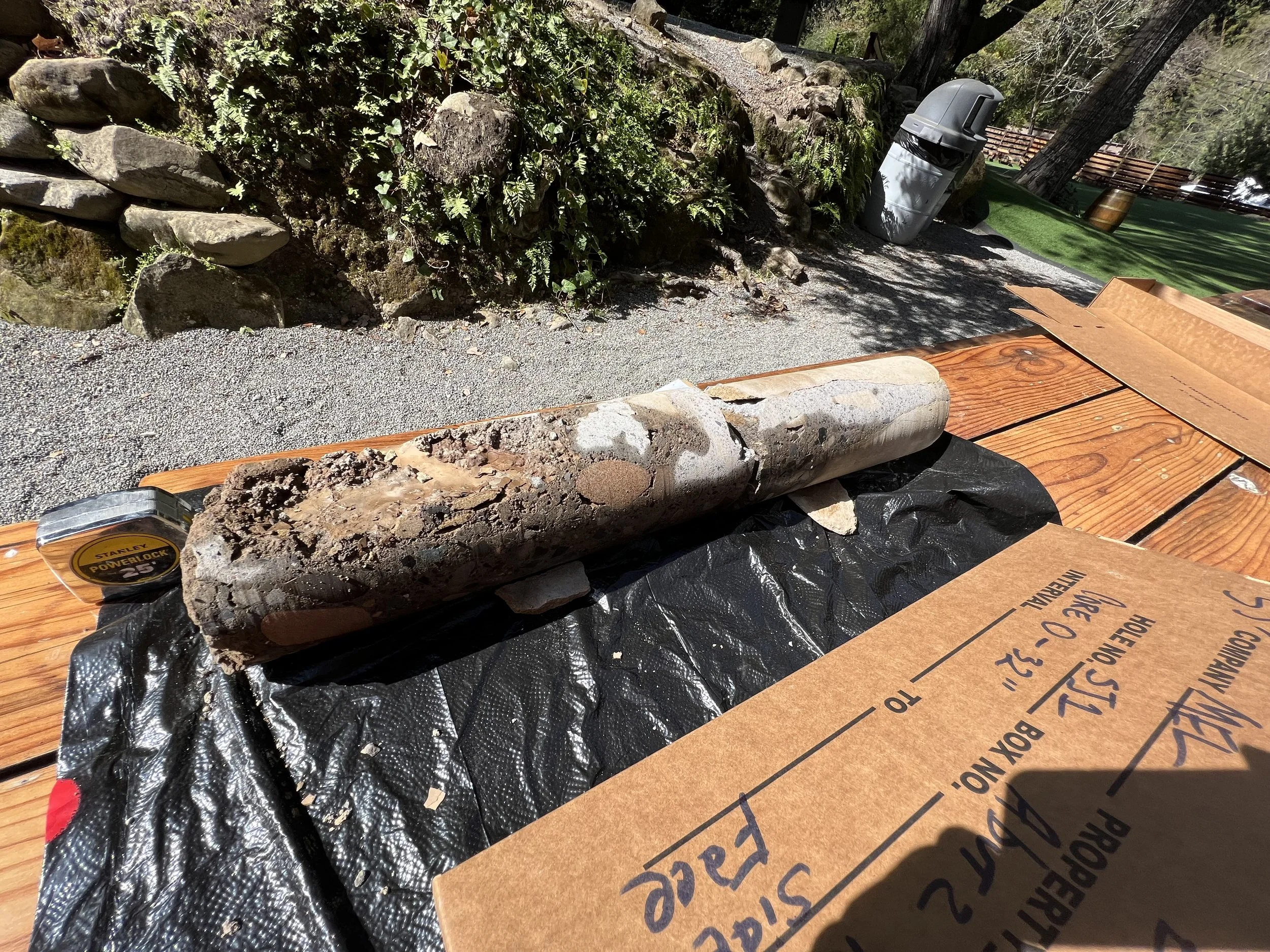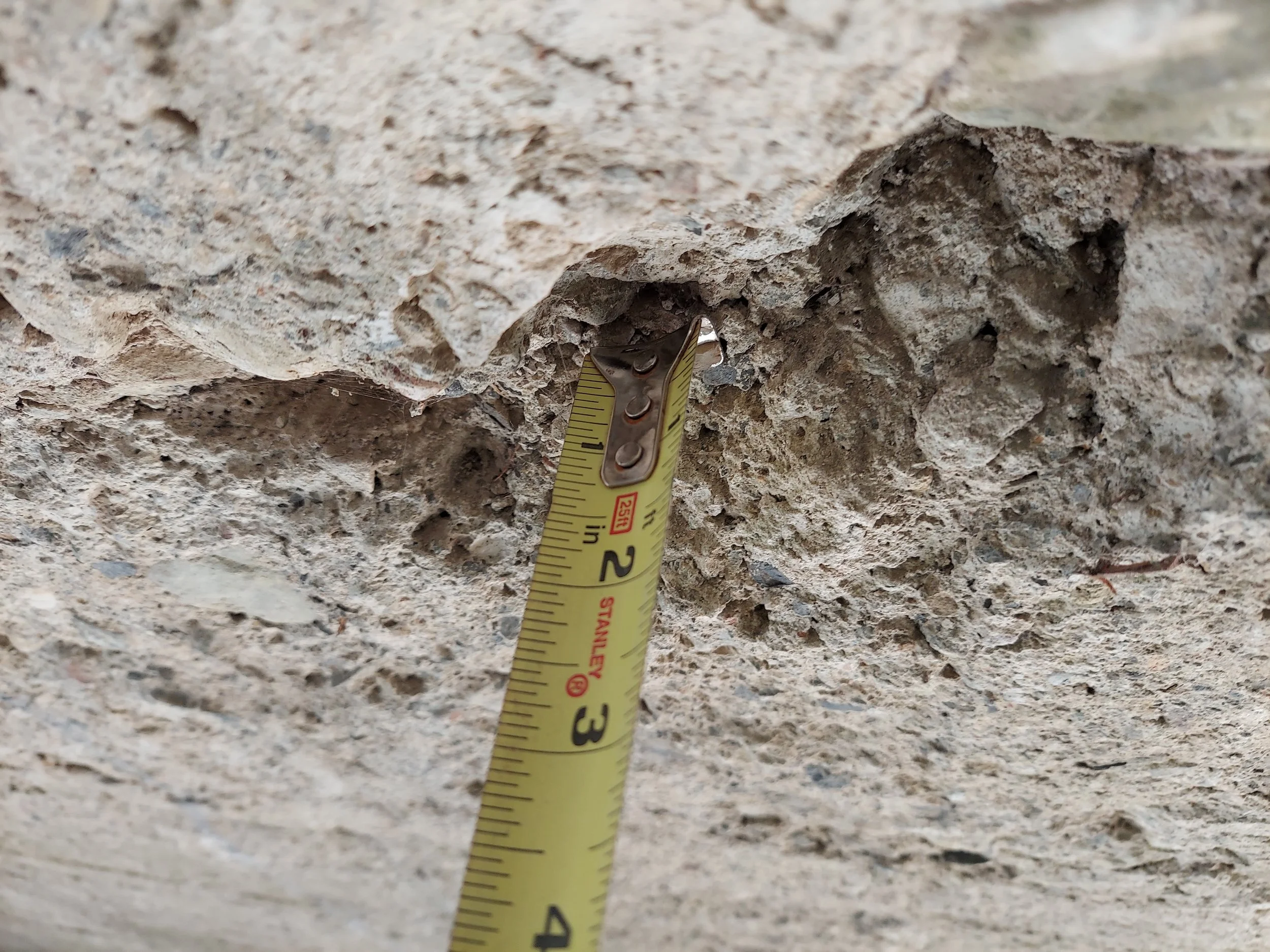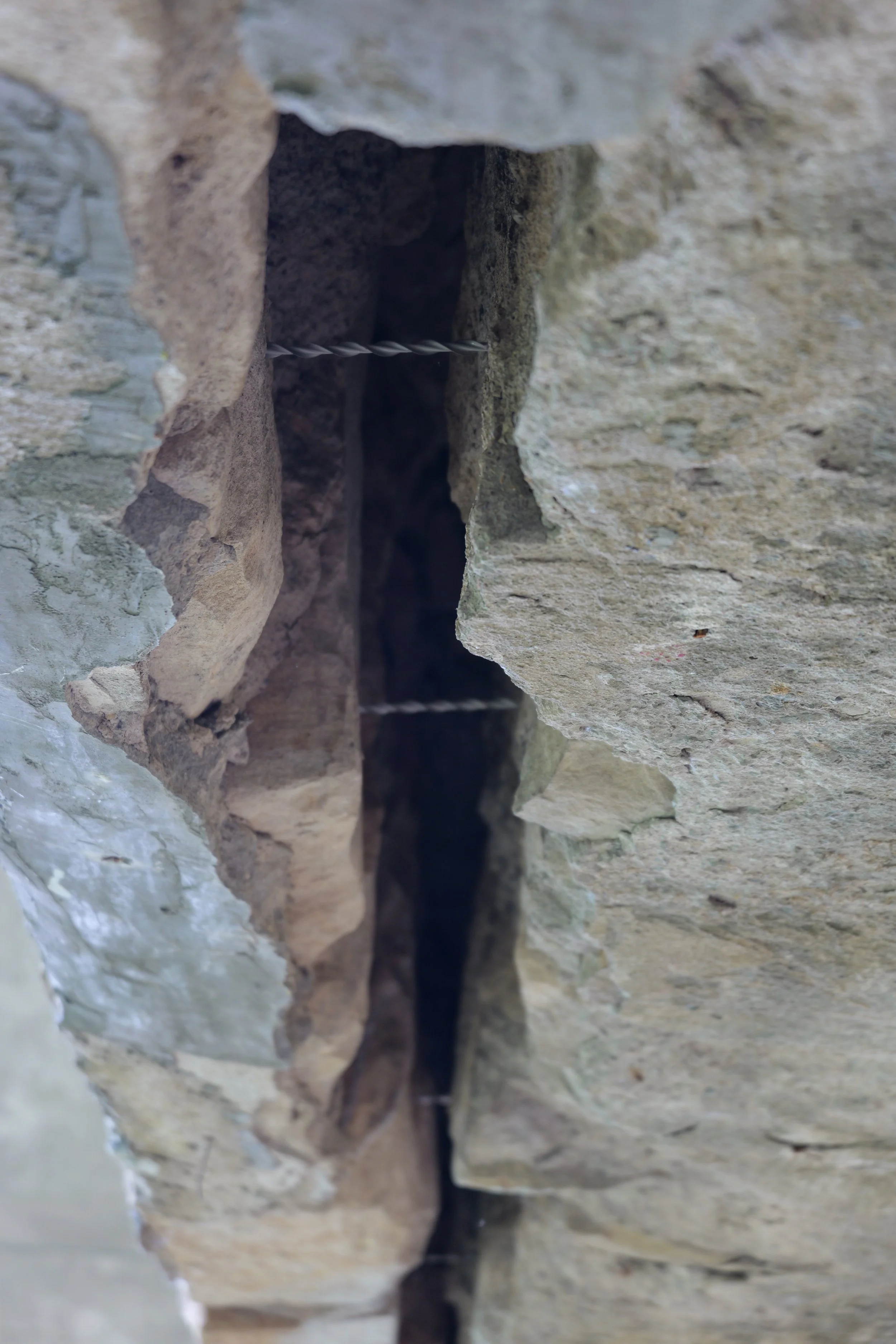Historic Saratoga Springs Bridge - Condition Evaluation
JUNE 2023
saratoga, CA
Overview
The Saratoga Creek Bridge underwent a comprehensive structural assessment by Concrete Science, Inc., due to concerns regarding concrete quality, mortar integrity, and potential corrosion. Issues such as soft concrete, poor aggregate bonding, void formation, and signs of efflorescence raised concerns about the bridge's structural integrity. The presence of harmful substances such as sulfates and chlorides required an in-depth evaluation to ensure the bridge's long-term stability.
Concrete Science conducted detailed forensic investigations, combining laboratory analysis, petrographic examination, and soil testing. This assessment aimed to determine the bridge's current condition and recommend targeted remediation measures to address identified vulnerabilities, preventing future degradation and ensuring continued structural performance.
SCOPE OF WORK
The evaluation incorporated multiple testing methodologies to determine concrete and mortar conditions, corrosion potential, and environmental influences affecting the structure:
-
(ASTM C856) Microscopic examination of concrete cores and mortar samples to assess aggregate properties, hardness, air content, and water-cement ratios.
-
(ASTM C114) Evaluated potential sulfate-induced distress.
-
(ASTM C1218) Determined chloride levels in concrete cores.
-
Identified minerals in efflorescence deposits to understand groundwater interactions.
-
(ASTM C1324) Assessed the chemical composition and quality of mortar samples.
-
Soil Testing (CA DOT #643, #422, #417): Analyzed soil properties, including pH, resistivity, chloride, and sulfate levels to evaluate corrosion risks to buried structural components.
KEY FINDINGS
1. Concrete Quality and Structural Concerns
The concrete exhibited soft paste conditions, with a Mohs hardness of 2-3.
Petrographic analysis revealed poor bonding between aggregates and cement paste, significant void formation, and inconsistent air distribution.
Water-cement ratios ranged between 0.62 and 0.68, indicating potentially weak concrete strength.
Petrographic analysis shows bleedwater voids (red arrows) & wood mixed in (blue arrows)
2. Chloride and Sulfate Presence
The chloride content ranged from low to moderate, posing a mild corrosion risk to the reinforcement.
The sulfate content was below distress thresholds; however, the presence of gypsum in the concrete indicated ongoing groundwater infiltration.
Soil and Corrosion Risk
Moderately acidic soil (pH 6.22-6.98) posed a mild corrosion risk to buried metals.
Chloride and sulfate levels in the soil were within non-corrosive limits.
RECOMMENDATIONS & SOLUTIONS
1. Immediate Structural Monitoring
Regular inspections are conducted to monitor concrete integrity, detect widening of voids, and assess efflorescence.
Ongoing monitoring of chloride and sulfate levels to preempt corrosion or sulfate attacks.
2. Targeted Concrete and Mortar Repairs
Localized repairs to areas exhibiting poor aggregate bonding and soft paste conditions.
Application of corrosion inhibitors and protective coatings to reinforcement in areas with higher chloride levels.
3. Groundwater and Efflorescence Mitigation
Implement drainage improvements to reduce groundwater ingress and minimize gypsum and calcite formation.
Application of waterproofing and sealing agents on exposed concrete surfaces.
4. Long-Term Structural Durability
Establish a routine monitoring and maintenance program to identify early signs of distress.
Perform preventive maintenance, including periodic sealing and corrosion protection treatments.
THE OUTCOME
The structural assessment and laboratory work performed by Concrete Science, Inc. provided the data and analysis needed to characterize material quality, moisture pathways, and corrosion risk. These findings informed Caltrans’s decision-making for repair strategy and prioritization, guiding targeted actions to address deterioration mechanisms and improve long-term durability.
2025 Update:
During a 2025 on site visit, the Park Manager of the Saratoga Springs venue reported that Caltrans reinforced the historic facade below, removed the top of the bridge, installed steel pillars and beams, and constructed a new overpass while preserving the original facade. The venue, Saratoga Springs, continues to host weddings that enjoy the preserved bridge aesthetic, while the new structure provides safety above and across the bridge.
Thank you to all our partners
State of California
Testing Laboratory - Matriscope Engineering Laboratories
Structural Engineers - Miyamoto International, Inc.
Forensic Engineers - Concrete Science, Inc.



















